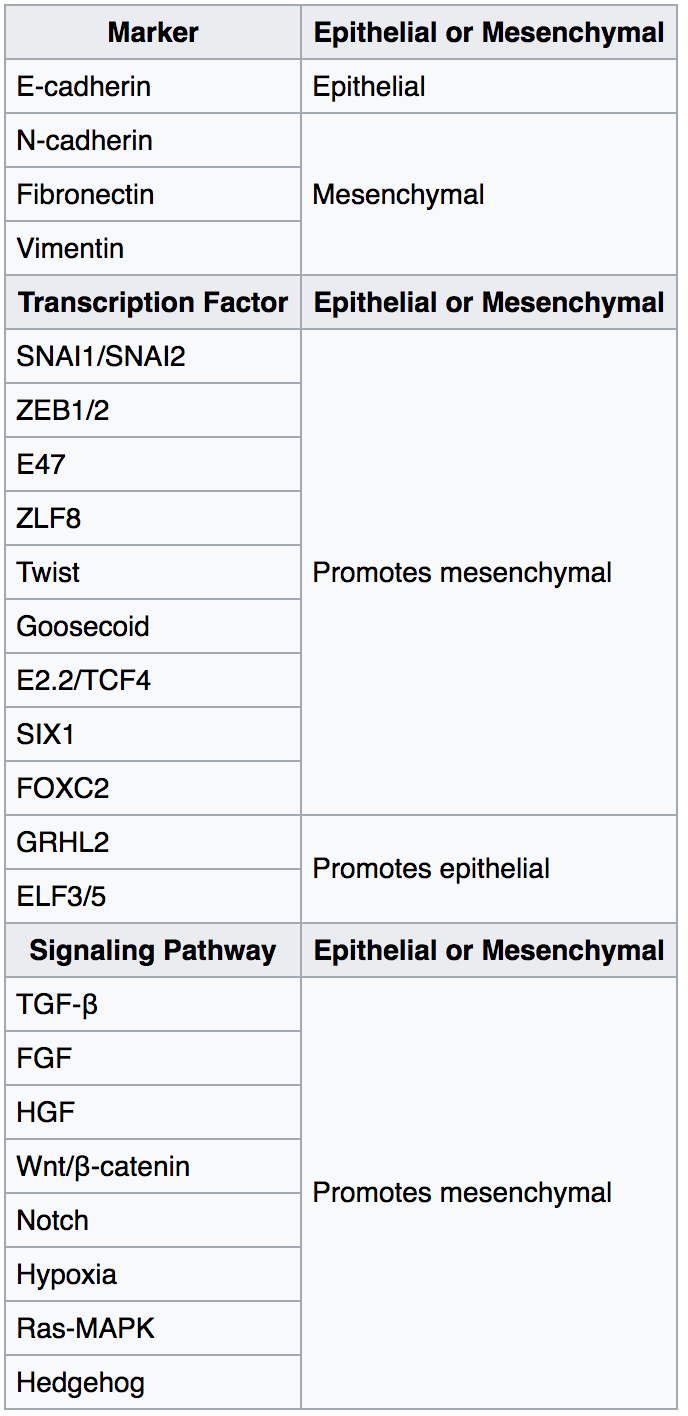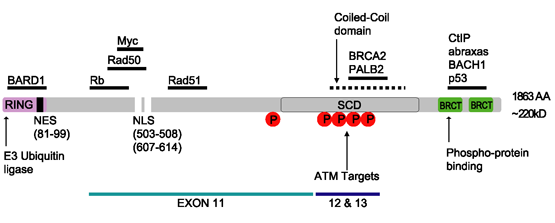|
TOX3
TOX high mobility group box family member 3, also known as ''TOX3'', is a human gene. The protein encoded by this gene is a member of a subfamily of transcription factors that also includes '' TOX'', '' TOX2'', and '' TOX4'' that share almost identical HMG-box DNA-binding domains which function to modify chromatin structure by unwinding and bending DNA. The protein TOX3 has a glutamine-rich C-terminus due to CAG repeats. ''TOX3'' is located on human chromosome band 16q12.1. The gene consists of seven exons and is highly expressed in both the brain and luminal epithelial breast tissue. Mutations in the gene are associated with increased susceptibility to breast cancer. ''TOX3'' plays a role in regulating calcium-dependent transcription and interacts with cAMP-response-element-binding protein (CREB) and CREB-binding protein ( CBP). It also increases transcription via interaction with CITED1, a transcription co-regulator that increases transcription factor activity. Disease linkage ... [...More Info...] [...Related Items...] OR: [Wikipedia] [Google] [Baidu] |
TOX2
TOX high mobility group box family member 2, also known as TOX2, is a human gene. The protein encoded by this gene is a member of a subfamily of transcription factors that also includes TOX, TOX3, and TOX4 that share almost identical HMG-box DNA-binding domains which function to modify chromatin Chromatin is a complex of DNA and protein found in eukaryote, eukaryotic cells. The primary function is to package long DNA molecules into more compact, denser structures. This prevents the strands from becoming tangled and also plays important r ... structure. References Transcription factors {{gene-20-stub ... [...More Info...] [...Related Items...] OR: [Wikipedia] [Google] [Baidu] |
Gene
In biology, the word gene has two meanings. The Mendelian gene is a basic unit of heredity. The molecular gene is a sequence of nucleotides in DNA that is transcribed to produce a functional RNA. There are two types of molecular genes: protein-coding genes and non-coding genes. During gene expression (the synthesis of Gene product, RNA or protein from a gene), DNA is first transcription (biology), copied into RNA. RNA can be non-coding RNA, directly functional or be the intermediate protein biosynthesis, template for the synthesis of a protein. The transmission of genes to an organism's offspring, is the basis of the inheritance of phenotypic traits from one generation to the next. These genes make up different DNA sequences, together called a genotype, that is specific to every given individual, within the gene pool of the population (biology), population of a given species. The genotype, along with environmental and developmental factors, ultimately determines the phenotype ... [...More Info...] [...Related Items...] OR: [Wikipedia] [Google] [Baidu] |
Breast Cancer
Breast cancer is a cancer that develops from breast tissue. Signs of breast cancer may include a Breast lump, lump in the breast, a change in breast shape, dimpling of the skin, Milk-rejection sign, milk rejection, fluid coming from the nipple, a newly inverted nipple, or a red or scaly patch of skin. In those with Metastatic breast cancer, distant spread of the disease, there may be bone pain, swollen lymph nodes, shortness of breath, or yellow skin. Risk factors for developing breast cancer include obesity, a Sedentary lifestyle, lack of physical exercise, alcohol consumption, hormone replacement therapy during menopause, ionizing radiation, an early age at Menarche, first menstruation, having children late in life (or not at all), older age, having a prior history of breast cancer, and a family history of breast cancer. About five to ten percent of cases are the result of an inherited genetic predisposition, including BRCA mutation, ''BRCA'' mutations among others. Breast ... [...More Info...] [...Related Items...] OR: [Wikipedia] [Google] [Baidu] |
SNAI1
Zinc finger protein SNAI1 (sometimes referred to as Snail) is a protein that in humans is encoded by the ''SNAI1'' gene. Snail is a family of transcription factors that promote the repression of the adhesion molecule E-cadherin to regulate epithelial to mesenchymal transition (EMT) during embryonic development. Function The ''Drosophila'' embryonic protein SNAI1, commonly known as Snail, is a zinc finger transcriptional repressor which downregulates the expression of ectodermal genes within the mesoderm. The nuclear protein encoded by this gene is structurally similar to the ''Drosophila'' Snail protein, and is also thought to be critical for mesoderm formation in the developing embryo. At least two variants of a similar processed pseudogene have been found on chromosome 2. SNAI1 zinc-fingers (ZF) binds to E-box, an E-cadherin promoter region, and represses the expression of the adhesion molecule, which induces the tightly bound epithelial cells to break loose from each other ... [...More Info...] [...Related Items...] OR: [Wikipedia] [Google] [Baidu] |
Epithelial–mesenchymal Transition
The epithelial–mesenchymal transition (EMT) is a process by which epithelial cells lose their cell polarity and cell–cell adhesion, and gain migratory and invasive properties to become mesenchymal stem cells; these are multipotent stromal cells that can differentiate into a variety of cell types. EMT is essential for numerous developmental processes including mesoderm formation and neural tube formation. EMT has also been shown to occur in wound healing, in organ fibrosis and in the initiation of metastasis in cancer progression. Introduction Epithelial–mesenchymal transition was first recognized as a feature of embryogenesis by Betty Hay in the 1980s. EMT, and its reverse process, MET ( mesenchymal-epithelial transition) are critical for development of many tissues and organs in the developing embryo, and numerous embryonic events such as gastrulation, neural crest formation, heart valve formation, secondary palate development, and myogenesis. Epithelial and mesenchym ... [...More Info...] [...Related Items...] OR: [Wikipedia] [Google] [Baidu] |
Clear Cell Renal Cell Carcinoma
Clear-cell renal-cell carcinoma (CCRCC) is a type of renal-cell carcinoma. Genetics Cytogenetics * Alterations of chromosome 3p segments occurs in 70–90% of CCRCCs * Inactivation of von Hippel–Lindau disease ( VHL) gene by gene mutation and promoter hypermethylation * Gain of chromosome 5q * Loss of chromosomes 8p, 9p, and 14q Molecular genetics Several frequently mutated genes were discovered in CCRCC: VHL, KDM6A/UTX, SETD2, KDM5C/JARID1C and MLL2. PBRM1 is also commonly mutated in CCRCC. Histogenesis CCRCC is derived from the proximal convoluted tubule. Microscopy Generally, the cells have a clear cytoplasm, are surrounded by a distinct cell membrane and contain round and uniform nuclei. Microscopically, CCRCCs are graded by the ISUP/WHO as follows: Updated: Jul 02, 2019 * Grade 1: Inconspicuous and basophilic nucleoli at magnification of 400 times * Grade 2: Clearly visible and eosinophilic nucleoli at magnification of 400 times * Grade 3: Clearly visi ... [...More Info...] [...Related Items...] OR: [Wikipedia] [Google] [Baidu] |
BRCA2
''BRCA2'' and BRCA2 () are human genes and their protein products, respectively. The official symbol (BRCA2, italic for the gene, nonitalic for the protein) and the official name (originally breast cancer 2; currently BRCA2, DNA repair associated) are gene nomenclature, maintained by the HUGO Gene Nomenclature Committee. One alternative symbol, FANCD1, recognizes its association with the FANC proteins, FANC protein complex. Orthologs, styled ''Brca2'' and Brca2, are common in other vertebrate species. May 2021 ''BRCA2'' is a human tumor suppressor gene (specifically, a caretaker gene), found in all humans; its protein, also called by the synonym breast cancer type 2 susceptibility protein, is responsible for repairing DNA. ''BRCA2'' and ''BRCA1'' are normally expressed in the cells of breast and other tissue, where they help repair damaged DNA or destroy cells if DNA cannot be repaired. They are involved in the repair of chromosome, chromosomal damage with an important role in th ... [...More Info...] [...Related Items...] OR: [Wikipedia] [Google] [Baidu] |
BRCA1
Breast cancer type 1 susceptibility protein is a protein that in humans is encoded by the ''BRCA1'' () gene. Orthologs are common in other vertebrate species, whereas invertebrate genomes may encode a more distantly related gene. ''BRCA1'' is a human tumor suppressor gene (also known as a caretaker gene) and is responsible for repairing DNA. ''BRCA1'' and ''BRCA2'' are unrelated proteins, but both are normally expressed in the cells of breast and other tissues, where they help repair damaged DNA, or destroy cells if DNA cannot be repaired. They are involved in the repair of chromosomal damage with an important role in the error-free repair of DNA double-strand breaks. If ''BRCA1'' or ''BRCA2'' itself is damaged by a BRCA mutation, damaged DNA is not repaired properly, and this increases the risk for breast cancer. ''BRCA1'' and ''BRCA2'' have been described as "breast cancer susceptibility genes" and "breast cancer susceptibility proteins". The predominant allele has a no ... [...More Info...] [...Related Items...] OR: [Wikipedia] [Google] [Baidu] |
FOXA1
Forkhead box protein A1 (FOXA1), also known as hepatocyte nuclear factor 3-alpha (HNF-3A), is a protein that in humans is encoded by the ''FOXA1'' gene. Structure FOXA1 is a member of the forkhead domain transcription factor family. The forkhead domain is essential for its DNA-binding function, and consists of three alpha helices, three beta strands, and two loops (called "wings"). The domain binds along the DNA major groove and the wings directly contact the DNA. FOXA1 is modified by the O-GlcNAc post-translational modification. Function FOXA1 is a pioneer factor, a transcription factor that directly binds condensed chromatin, facilitating the binding of other transcription factors. In prostate cells, FOXA1 interacts with the androgen receptor (AR) to drive transcription of prostate-specific genes. FOXA1 is a member of the forkhead class of DNA-binding proteins. Similar family members in mice have roles in the regulation of metabolism and in the differentiation of the p ... [...More Info...] [...Related Items...] OR: [Wikipedia] [Google] [Baidu] |
Single-nucleotide Polymorphism
In genetics and bioinformatics, a single-nucleotide polymorphism (SNP ; plural SNPs ) is a germline substitution of a single nucleotide at a specific position in the genome. Although certain definitions require the substitution to be present in a sufficiently large fraction of the population (e.g. 1% or more), many publications do not apply such a frequency threshold. For example, a Guanine, G nucleotide present at a specific location in a reference genome may be replaced by an Adenine, A in a minority of individuals. The two possible nucleotide variations of this SNP – G or A – are called alleles. SNPs can help explain differences in susceptibility to a wide range of diseases across a population. For example, a common SNP in the Factor H, CFH gene is associated with increased risk of age-related macular degeneration. Differences in the severity of an illness or response to treatments may also be manifestations of genetic variations caused by SNPs. For example, two ... [...More Info...] [...Related Items...] OR: [Wikipedia] [Google] [Baidu] |
CITED1
Cbp/p300-interacting transactivator 1 is a protein that in humans is encoded by the ''CITED1'' gene. Interactions CITED1 has been shown to Protein-protein interaction, interact with HSPA8 and EP300. References External links * Further reading * * * * * * * * * * * * * {{gene-X-stub ... [...More Info...] [...Related Items...] OR: [Wikipedia] [Google] [Baidu] |
Protein
Proteins are large biomolecules and macromolecules that comprise one or more long chains of amino acid residue (biochemistry), residues. Proteins perform a vast array of functions within organisms, including Enzyme catalysis, catalysing metabolic reactions, DNA replication, Cell signaling, responding to stimuli, providing Cytoskeleton, structure to cells and Fibrous protein, organisms, and Intracellular transport, transporting molecules from one location to another. Proteins differ from one another primarily in their sequence of amino acids, which is dictated by the Nucleic acid sequence, nucleotide sequence of their genes, and which usually results in protein folding into a specific Protein structure, 3D structure that determines its activity. A linear chain of amino acid residues is called a polypeptide. A protein contains at least one long polypeptide. Short polypeptides, containing less than 20–30 residues, are rarely considered to be proteins and are commonly called pep ... [...More Info...] [...Related Items...] OR: [Wikipedia] [Google] [Baidu] |





